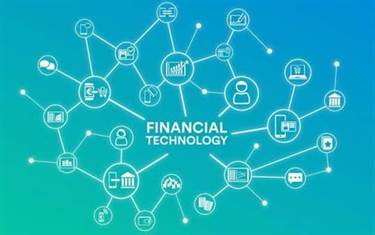Instead, blocks are ‘forged.’ Those participating in this process lock a specific number of coins on the network. Other consensus mechanisms were created to solve these PoW problems; the most popular being PoS. The two big problems with PoW are that it uses a lot of electricity and can only process a limited number of transactions simultaneously (seven for Bitcoin). Transactions typically take at least ten minutes to complete, with this delay increasing when the network is congested. Though compared to the days-long wait required to wire money across the globe, or even to clear a check, Bitcoin’s ten-minute delay is quite remarkable.
In 2013, after traveling, meeting with bitcoin developers, and discovering Bitcoin’s limitations, Vitlaik Buterin decided to improve upon the Bitcoin blockchain and built Ethereum. The bigger a person’s stake, the more mining power they have—and the higher the chances they’ll be selected as the validator for the next block. The first blockchain-like protocol was proposed by cryptographer David Chaum in 1982.
6 Public, private, and consortium/federated blockchain technologies for automated vehicles
Once solved, the block is added to the network—and your fee, combined with all other transaction fees in that block, is the miner’s reward. He specializes in making investing, insurance and retirement planning understandable. Before writing full-time, David worked as a financial advisor and passed the CFP exam. Blockchain has the potential to streamline processes across many different industries. Any blockchain solution, no matter how prescient, is only as good as its execution.

In general, a block contains a timestamp, a reference to the previous block, the transactions and the computational problem that had to be solved before the block went on the https://www.globalcloudteam.com/. The distributed network of nodes that must reach consensus makes fraud almost impossible within the blockchain. As soon as the spreadsheet or ledger or registry is updated, it can no longer be changed. The registry is updated on all computers on the network at the same time. Changes to blockchains require consensus from a majority of the network’s participants.
What are the business benefits of blockchain?
Keeping online identity data in a central location could become a practice of the past with the use of blockchain, meaning computer hackers would no longer have centralized points of vulnerability to attack. Bob then gave his spreadsheet diary to 3,000 different computers, each located in different regions globally. Every time a transaction occurs, it must be approved by those nodes, each of which checks the transaction’s validity. Once every node has checked a transaction, essentially a type of electronic vote occurs. Some nodes may think the transaction is valid, while others may see it as fraudulent. One potential risk to a blockchain is a “51% attack,” during which a party overtakes the majority of a blockchain’s hash rate, allowing them to then dictate the network.

If they were to change their copy, they would have to convince the other nodes that their copy was the valid one. Blockchain technology achieves decentralized security and trust in several ways. To begin with, new blocks are always stored linearly and chronologically. After a block has been added to the end of the blockchain, previous blocks cannot be changed. A blockchain allows the data in a database to be spread out among several network nodes—computers or devices running software for the blockchain—at various locations. This not only creates redundancy but maintains the fidelity of the data.
Classification of blockchain system
A user will spend their cryptocurrency more than once in a double-spending attack. Faking a block is also nearly impossible because the validity of each block and, by extension, its inclusion into the blockchain is determined by an electronic consensus of nodes. As a result, capturing the network would require a computer with a virtually impossible amount of power.
In the world of cryptocurrency, this identity is referred to as ‘digital signature’ and is used for authorizing and controlling transactions. A hard fork in a blockchain refers to a permanent divergence in the blockchain’s history that results in two separate chains. It can happen due to a fundamental change in the protocol of a blockchain and all nodes do not agree on the update. Hard forks can create new cryptocurrencies or the splitting of existing ones and It requires consensus among the network participants to resolve. Most people assume Blockchain and Bitcoin can be used interchangeably, but in reality, that’s not the case.
The future of blockchain technology
There have been talks of moving to proof of stake, especially on the Ethereum https://www.globalcloudteam.com/how-to-build-a-blockchain-10-simple-steps/ for a while, but the upgrade is still in a very early stage. Right, so when you’re creating, or mining, blocks each guess you make takes time and electricity, whether it’s right or not. But, as mentioned before, that’s what makes the blockchain secure — it would take a lot of time and energy to rewrite the record. While blockchain will be able to offer the characteristics in all the domains, it will primarily bank on the cryptographic protocols that mechanize the blockchain internals. It will not be wrong to say that the blockchain in entirety banks upon the strong mathematical foundations of cryptography. Whether it is the proof of work mechanics or the digital signatures or encryption part, the complete ecosystem of blockchain is entirely dependent critically on cryptography.

The “block” in a blockchain refers to a block of transactions that has been broadcast to the network. When a new block of transactions is validated by the network, it is attached to the end of an existing chain. This chain of blocks is an ever-growing list, or ledger, of transactions that the network has validated. We call this single, agreed-upon history of transactions a blockchain. To stimulate the creation of open-source digital public goods, UNICEF makes early-stage investments in blockchain startups in both USD and cryptocurrency. Launched in 2014, the UNICEF Innovation Fund allows UNICEF to quickly assess, fund and grow open-source solutions that can improve children’s lives.
☑ Q: What are the 3 pillars of blockchain technology?
If a blockchain uses proof of work to validate blocks, then it requires a lot of computing power to complete transactions. Since computers need energy to run, transactions end up using a lot of energy. Blockchain has promise as an approach to developing systems for a number of applications within cybersecurity.
- One of blockchains and cryptocurrencies’ most significant advantages is also its biggest weakness.
- This means that if you wanted to, you could track a bitcoin wherever it goes.
- But the time stamps ensure that data is added in the right order, and all participants have the latest version.
- PoS still uses cryptographic algorithms for validation, but transactions get validated by a chosen validator based on how many coins they hold, also known as their stake.
- The math changes, however, if there are very few people mining a particular coin.
- Most importantly, we hope it lit a small fire in you to learn even more about a technology that’s fundamentally changing the way we trust and exchange value.
One potential use case for NFTs is the authentication of artwork, with art pieces tied to NFTs, which can verify their authenticity and ownership. To read more on the different types of blockchain networks, please click here. This type of attack is unlikely, though, because it would take a large amount of effort and a lot of computing power to execute. Blocks are always stored chronologically, and it is extremely difficult to change a block once it has been added to the end of the blockchain.
Trusted Concert Tickets
An introduction to blockchain technology, peer-to-peer networks, distributed ledger technology, and the value of decentralization. If a space would benefit in some way from being decentralized, or if everyone needs to share a known-truthful record, then yes, there is a chance blockchain could be a future tech. But if not, then there’s not a ton of benefit to using the technology over, say, a regular database. In other words, most of the time companies aren’t just throwing out their old systems and moving to blockchains, they’re integrating them in a way that makes sense. Well the good news is that, while proof of work may be popular, it’s not the only way to do things.
Tags: